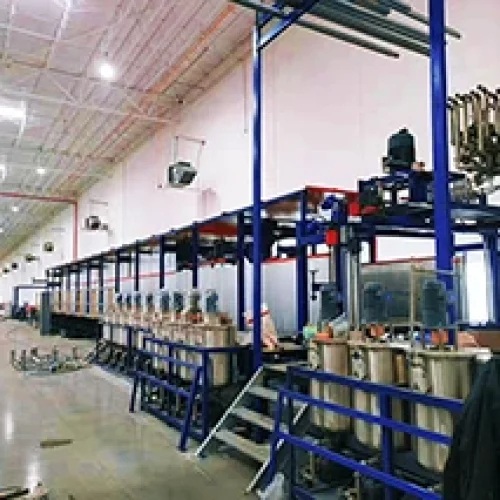- PLC (Programmable Logic Controller)
A PLC is an automatic control device equipped with instruction memory and digital or analog I/O interfaces. It primarily performs logic, sequential, timing, counting, and arithmetic operations. It is used for the automated control of machinery or production processes.
- Variable Frequency Drive (VFD)
A VFD transforms power frequency from one frequency to another using power semiconductor devices. The main circuits of a VFD are divided into two types:
Voltage Type: Converts DC voltage from a voltage source to AC with capacitor filtering in the DC circuit.
Current Type: Converts DC current from a current source to AC with inductor filtering in the DC circuit.
- Photoelectric Switch
This switch detects objects by the interruption or reflection of an infrared light beam, allowing it to determine the presence or absence of an object. It can detect any object that reflects light, not just metals. In vacuum perforating machines, a mirror-reflective photoelectric switch is used.
- Heat Exchanger System
This system controls the temperature of raw materials to meet specific requirements. After passing through the heat exchanger, the temperature of the raw materials decreases, causing an increase in viscosity. To ensure the proper operation of the high-pressure pump, a specialized feeding pump is needed, with specifications calculated based on flow rate and material viscosity. The temperature control of the heat exchanger should be located near the mixing head, with raw material temperature linked to the cooling water switch, allowing automatic control of cooling water flow to maintain the desired temperature.
- Perforating Machine
There are three types of perforating machines: roller, vacuum, and brush. Roller perforating machines provide the best control, followed by vacuum machines, while brush machines are the least effective and are now rarely used. The purpose of perforating is to prevent product deformation. The roller perforating machine adjusts the gap size; too large a gap results in poor perforation, while too small a gap leaves noticeable pressure marks on the product. There are two perforating methods:
Chemical Method: Using perforating agents.
Mechanical Method: Using perforating machines.
Products must be perforated promptly after demolding. Some products expand after demolding and should be left for a while before perforating.
- TPR (Thermoplastic Rubber)
TPR prevents product shrinkage and collapse of bubbles. Its primary function is effective perforation to facilitate demolding. However, TPR can cause fluctuations in ILD (Indentation Load Deflection) and directly affects the foam rise speed.
- Loop Pressure Regulating Valve
This valve is essential for balancing system pressure in the control system. It should be positioned as close to the nozzle as possible. If placed too far, pressure fluctuations can occur, leading to system instability and inconsistent products.

